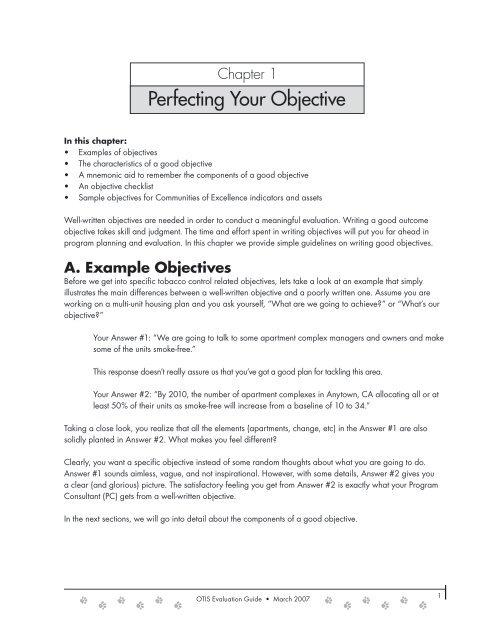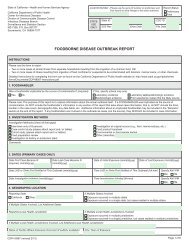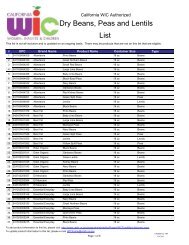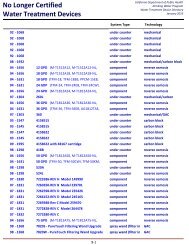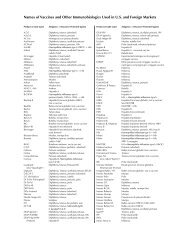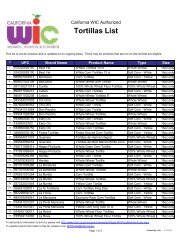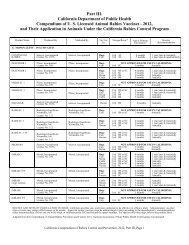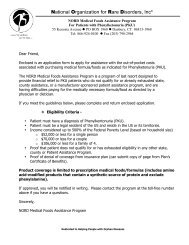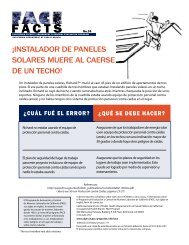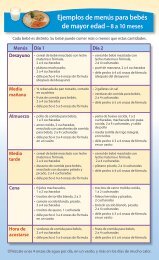OTIS Evaluation Guide (PDF) - California Department of Public Health
OTIS Evaluation Guide (PDF) - California Department of Public Health
OTIS Evaluation Guide (PDF) - California Department of Public Health
Create successful ePaper yourself
Turn your PDF publications into a flip-book with our unique Google optimized e-Paper software.
Chapter 1<br />
Perfecting Your Objective<br />
In this chapter:<br />
• Examples <strong>of</strong> objectives<br />
• The characteristics <strong>of</strong> a good objective<br />
• A mnemonic aid to remember the components <strong>of</strong> a good objective<br />
• An objective checklist<br />
• Sample objectives for Communities <strong>of</strong> Excellence indicators and assets<br />
Well-written objectives are needed in order to conduct a meaningful evaluation. Writing a good outcome<br />
objective takes skill and judgment. The time and effort spent in writing objectives will put you far ahead in<br />
program planning and evaluation. In this chapter we provide simple guidelines on writing good objectives.<br />
A. Example Objectives<br />
Before we get into specific tobacco control related objectives, lets take a look at an example that simply<br />
illustrates the main differences between a well-written objective and a poorly written one. Assume you are<br />
working on a multi-unit housing plan and you ask yourself, “What are we going to achieve?” or “What’s our<br />
objective?”<br />
Your Answer #1: “We are going to talk to some apartment complex managers and owners and make<br />
some <strong>of</strong> the units smoke-free.”<br />
This response doesn’t really assure us that you’ve got a good plan for tackling this area.<br />
Your Answer #2: “By 2010, the number <strong>of</strong> apartment complexes in Anytown, CA allocating all or at<br />
least 50% <strong>of</strong> their units as smoke-free will increase from a baseline <strong>of</strong> 10 to 34.”<br />
Taking a close look, you realize that all the elements (apartments, change, etc) in the Answer #1 are also<br />
solidly planted in Answer #2. What makes you feel different?<br />
Clearly, you want a specific objective instead <strong>of</strong> some random thoughts about what you are going to do.<br />
Answer #1 sounds aimless, vague, and not inspirational. However, with some details, Answer #2 gives you<br />
a clear (and glorious) picture. The satisfactory feeling you get from Answer #2 is exactly what your Program<br />
Consultant (PC) gets from a well-written objective.<br />
In the next sections, we will go into detail about the components <strong>of</strong> a good objective.<br />
<strong>OTIS</strong> <strong>Evaluation</strong> <strong>Guide</strong> • March 2007<br />
1


